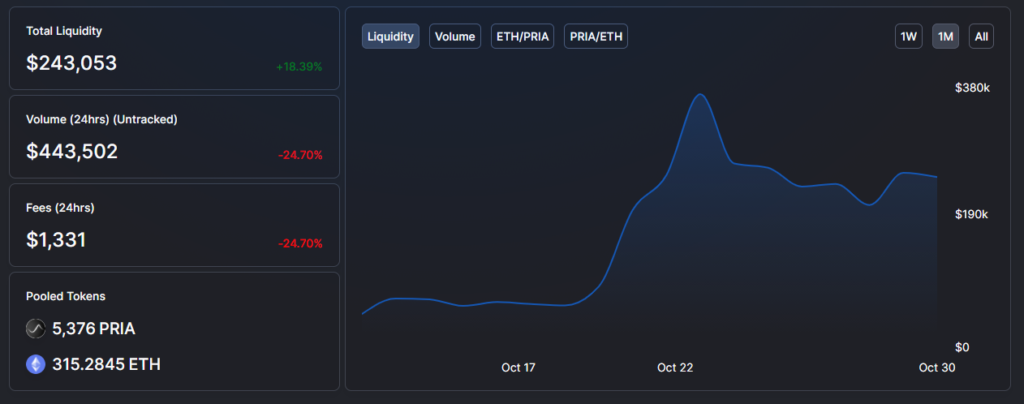PRIA Burns Frontrunning Bots
Yesterday while I was puttering about on Telegram, I noticed a couple of large PRIA orders come through via a bot channel that I have pulled up. What immediatley struck me was that two of the three transactions were by the same address, a purchase and a sale, right before an after a larger order. It was apparent that this was a bot order trying to front run a transaction on the Uniswap pool, likely because of high slippage on the order.
What the bot owner didn’t account for was PRIA’s transaction burn. Between four and six percent of the purchased tokens were burned on during the attempt, resulting in about half an eth’s worth of loss for the bot. Oops.
This is part of a bigger problem in the Ethereum ecosystem, and why it’s considered an adversarial system. All transactions get sent to the mempool before they are mined in a block, which gives bots the opportunity to watch the mempool for transactions and try to front run it by submitting another transaction with slightly more gas.
Some have called this aspect of Ethereum’s architecture “the Dark Forest”. There’s a fascinating write up about it here that everyone should read if you haven’t already: Escaping The Dark Forest.
Another dev on the PRIA project has been trying to do KEEPR jobs the past few days and said that it is nearly impossible because everything keeps getting fronted as well. I’m not sure what the solution is to fix this problem, other than having private mem pools available via large mining pools, as mentioned in the article above.
At some point I need to dive into what solutions are being proposed by the Ethereum community, and compare how it’s handled in other L1 solutions like PolkaDot or Cosmos.
Value DeFi exit
A few months ago I tried staking some USDC in the Value DeFi seed pool v2, which was supposed to be earning 23% APY. The pool is closing, which I happened upon just by chance, and I just withdrew my funds for some underwhelming results.
I got my stake out, minus a bunch of gas fees, and got a couple bucks worth of $YFV back, which I then had to swap for $VALUE. Ok, I guess. I’ll just sit on this forever and see if it ever turns into anything.
The lesson here is that DeFi does not reward the timid. If you have less than a thousand dollars, you’re probably better off just keeping your money in BlockFi. Unless you’re a complete degen and want to ape into something with insane APY and risk getting rug pulled.
Currently, my main vault holdings are in the Yearn sBTC Curve vault. After that, it’s the Yearn BUSD vault. I’ve also got some Link in their yaLINK vault, which isn’t doing too well at the moment, but I can’t be bothered to move it right now.
My main strategy at the moment is to move funds that are locked into the Lending Club accounts I have earmarked for my kids, into stablecoins into various vaults. (This is on top of the BTC that I DCA for them into their BlockFi accounts.) I’m also trying to figure out the best way to maintain my cash flow between my expenses and lending platform. Moving in and out of vaults is expensive, so I’m trying to figure out the best way to do that. Quarterly, maybe? Keeping funds that need to be converted to cash in BlockFi for easy ACH back to fiat.
Keeping track of everything is proving to be quite the chore. I’m using a Notion database, but keeping track of where funds go, where they originated from (in the case of kids and other family members), and fees associated with the various conversions is a bit of a mess right now.
And tracking the value of the shares of these vaults outside of something like Zapper or DeBank is difficult. Right now I have no idea whether keeping cash in BlockFi at a stable eight percent with no fees is a better idea than trying to chase twenty percent plus with all the variability, contract risk, and fees.
I’ll keep working on a solution though. If you have one, please leave suggestions in the comments.

